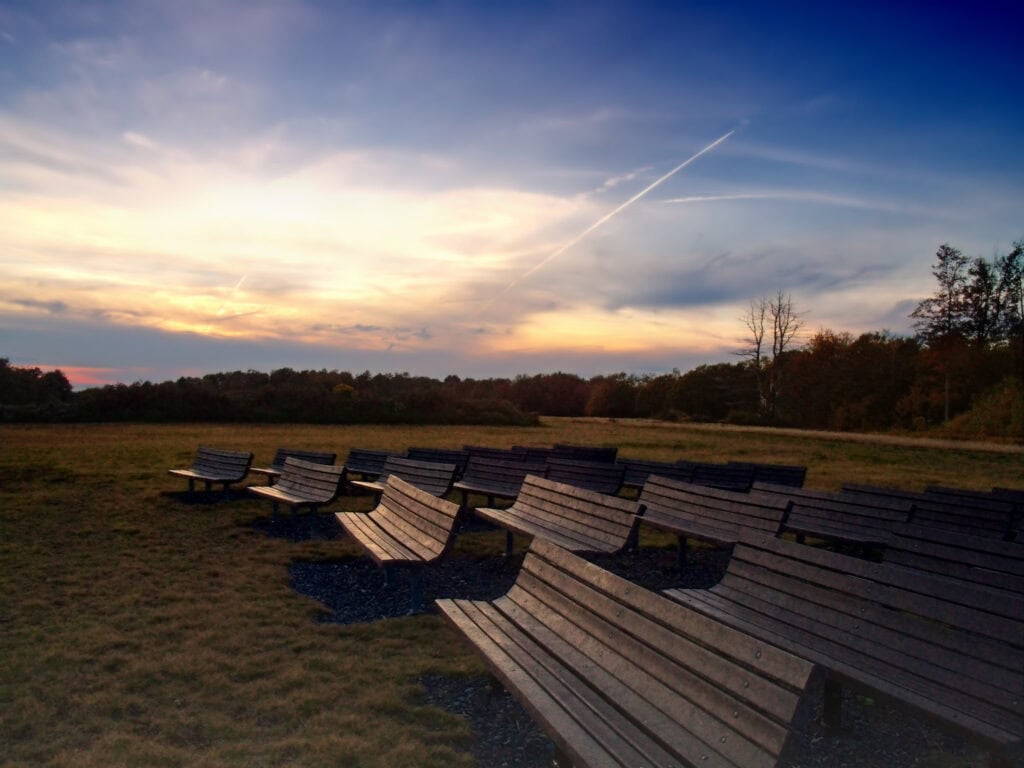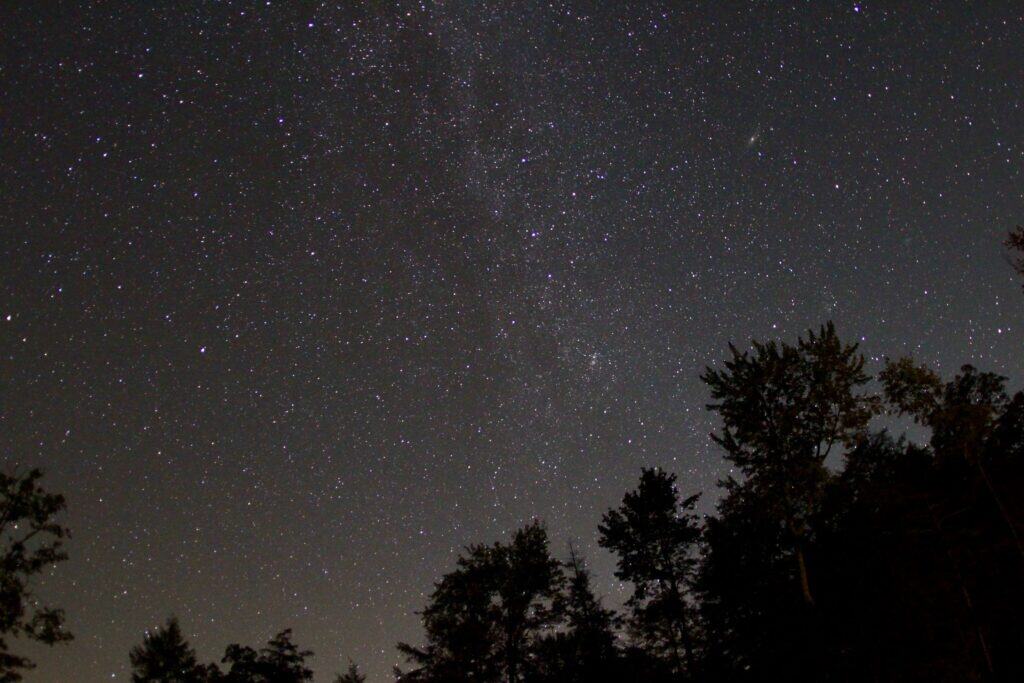Get starstruck at PA’s International Dark Sky Park & other dark sky sites
Learn more about Cherry Springs State Park—the only International Dark Sky Park in Pennsylvania—and other dark sky sites across the state.
The best place to see the stars in Pennsylvania is Cherry Springs State Park, hands down. After all, it’s hard to challenge a certified International Dark Sky Park, one of the best in the world. But there are other incredible places to see stars, planets, and more in Pa.—you just need to escape the light pollution of the cities.
We’ve detailed all you need to know to experience stargazing at Cherry Springs, and we’ve also offered some other ideas for dark sky viewing throughout the state. But don’t limit yourself to what you read here: If you know of a rural state park or state forest far from civilization (and all its lights), grab your tent and red-light flashlight (to preserve your night vision) and see what wonders you might find in the night sky.

Pennsylvania’s International Dark Sky Park
Cherry Springs State Park
In 2007, Cherry Springs State Park was certified by DarkSky International as the second International Dark Sky Park in the world! And this terrific space for dark sky viewing is in our state. Stargazers travel to Cherry Springs from all over to get a glimpse of the Milky Way—that’s right, under optimal conditions, you can see the Milky Way at Cherry Springs—in addition to thousands of stars and other heavenly bodies.
You can visit Cherry Springs and view the night sky whether or not you’re staying overnight at the park. Cherry Springs has a Night Sky Public Viewing Area where visitors can let their eyes adjust and enjoy the night sky. This area is intended for shorter visits — you can’t stay overnight. Sometimes, park staff will host night sky viewing events. Note that the key to preserving the darkness at Cherry Springs is limiting light. While that may sound obvious, it means that it’s important you don’t shine bright white lights via flashlights or headlamps if you can help it.
You can also spend the night at the state park. You can stay at the Cherry Springs Rustic Campground, where light is allowed—though it’s suggested to use a red filter to preserve night vision. The campground is best for casual viewing. More serious stargazing occurs in the Overnight Astronomy Observation Field, where white light is totally prohibited.
If possible, bring a red flashlight or headlamp, which will allow you to see while still preserving your night vision.
There are rarely poor times to visit Cherry Springs—even if it’s cloudy, the surroundings are beautiful—but you may want to prioritize lunar events like meteor showers, or at the very least, when there’s not a full moon (and all its brightness)!
Currently, Cherry Springs is under renovation, and the Night Sky Public Viewing Area is closed, but you can still plan your next stargazing adventure there. (Plus, the campground and Overnight Astronomy Observation Field remain open.)

Other dark sky spots in Pennsylvania
Western Pa.
The best place to see the stars in the western half of Pennsylvania is the northwestern gem of Allegheny National Forest. The national forest is remote and, therefore an ideal place to get access to dark skies that make the stars visible. There are also a number of state parks just outside Allegheny National Forest where you can set up to view the night sky. Try camping at Chapman State Park, Clear Creek State Park, or Cook Forest State Park, which are all fairly close to each other.
The southwestern corner of the state is more densely populated and thus the skies are much brighter—however, you can still venture into the Laurel Highlands for much darker skies. Laurel Hill State Park is a favorite dark sky destination for amateur astronomers in the region.

South-Central Pa.
If you find yourself in the southern part of central Pa., you can still find relatively remote areas from which to aim your telescope (or just your eyes!). Trough Creek State Park, located in Huntingdon County, is in a gorge very close to Raystown Lake, meaning in the warmer months, you can combine your dark sky viewing with a swim. Cowan’s Gap State Park is in a valley in Fulton County, surrounded by Buchanan State Forest.
North-Central Pa.
We’ve already detailed the best place to view the night sky in Pennsylvania, which happens to be in north-central Pa.! If you can’t get to Cherry Springs State Park, then you can likely find similar conditions in the rural Susquehannock State Forest, which surrounds Cherry Springs. The state forest covers 265,000 acres in the northern part of the state.
For more stargazing in north-central Pa., you might also check out the following spots: Centre County’s Black Moshannon State Park, McCalls Dam State Park, Poe Paddy State Park, and Poe Valley State Park; Lycoming County’s Upper Pine Bottom State Park and Little Pine State Park; and Clearfield County’s Simon B. Elliot State Park and Parker Dam State Park.
Eastern Pa.
It’s harder to find dark skies in eastern Pa., but not impossible. You do, however, need to get a fair distance from Philadelphia, where the bright city lights blot out the stars.
French Creek State Park is just a little over an hour from Philly and is a great location for stargazing. You might also want to head further north, where you’re likely to see an even better view of the night sky. Check out Sullivan County’s Worlds End State Park, Bradford County’s Mount Pisgah State Park, and Pike County’s Promised Land State Park.



